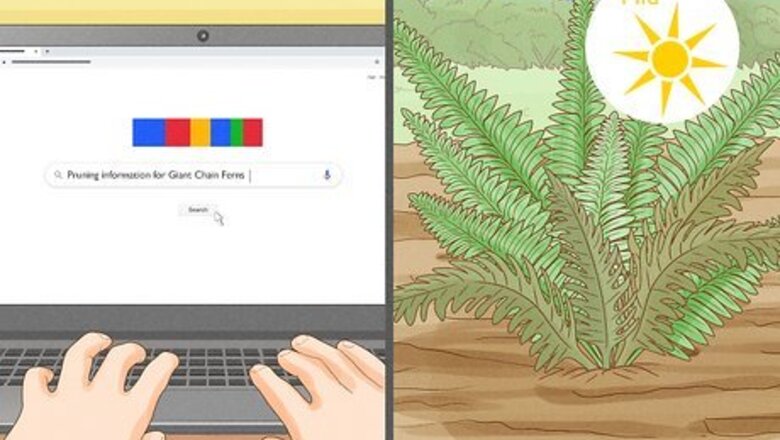
views
Pruning Ferns Outdoors

Check the pruning information for your specific plant. Some ferns, such as the Giant Chain Fern, do not do well with spring pruning. It's best to let the old foliage die out by itself in mid-summer. If you don't, you can cause damage to the plant. Once the fronds die, you can cut them out.
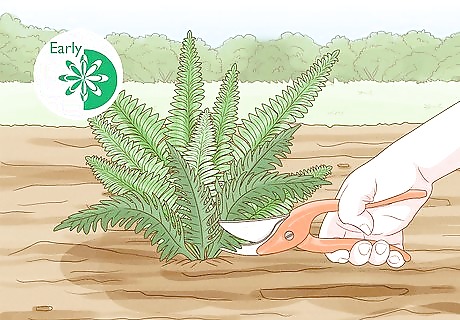
Cut back the old foliage early in the spring to make pruning easier. It's easiest to cut back the fern in the spring before the new leaves emerge. You should be able to see the tightly rolled fiddleheads, also known as crosiers, in a crown on the plant. Cut the foliage just above the crown with a sharp pair of gardening shears. The old foliage will likely not look as pretty as new foliage in the height of summer.

Trim the dead branches after the new growth comes in. Alternatively, you can wait until the new growth comes in to cut off the old fronds. It's best to do this early in the season. Shear off the dead fronds near the crown to make your plant healthier and prettier. You can also cut out any older fronds that aren't dead yet but look a little bedraggled.
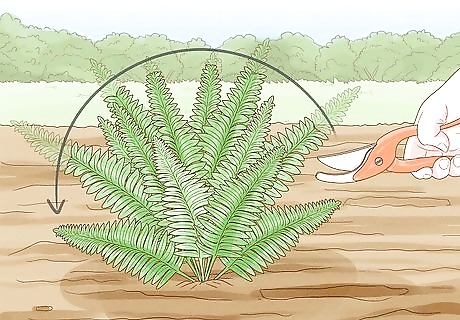
Cut the outer edges of the fronds to create a desired shape. If you don't like the way your fern is shaped, simply trim the outer edges until it's to your liking. Use sharp scissors or kitchen shears to do the trimming. It's best to only trim the outer edges after you've removed yellowing or dead fronds. Keep in mind that the tips turn brown if you clip off the edges.
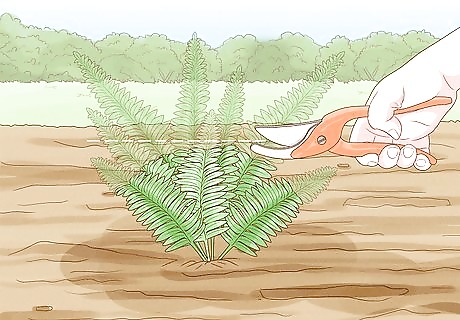
Trim a transplanted fern by half to help it thrive. When you |move a fern, it may need some help getting settled in its new location. Cut back all the fronds by half, reducing the water your fern needs to support itself. This technique lets the plant focus more attention on getting its roots settled. Don't worry. Once the plant is settled, it will grow back.
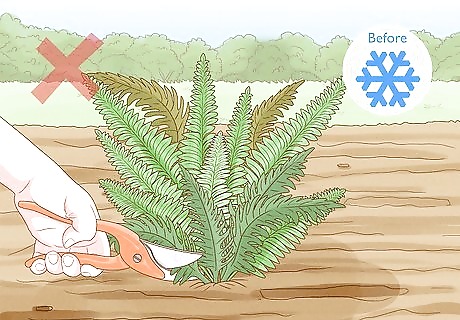
Avoid pruning right before winter. It can be tempting to cut off dead or dying fronds at the beginning of winter. However, those fronds help protect the root crown throughout the winter. In other words, leaving the old fronds in place can help your fern survive through the cold of winter and return in the spring.
Trimming Indoor Ferns
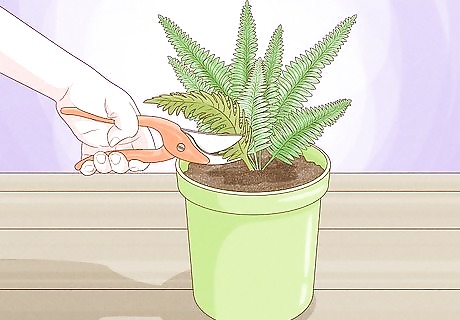
Cut off dead fronds as they appear. Use a sharp pair of scissors to cut the fronds. Dead fronds will be brown or black. Cut them near the base of the frond, just above the joint. You can use a sharp pair of scissors or a small pair of garden shears.

Remove any fronds infected with scales. Scales are tiny insects that attack your plants. They are small, reddish brown, and flat. When scales attack the plant, the leaves will likely turn yellow and may weaken. Look for scales on the underside of leaves along the vein or on the stems. Scales can spread, so remove any fronds you see with shears or scissors. If you have a bad infestation, you may need to throw out the houseplant so the scales don't spread to other houseplants. Outdoor ferns also get scales, but you should try controlling them with oil-based spray pesticides instead of pruning. Don't mistake sori for scales. Sori (singular: sorus) contain the spore-producing structures and are located on the undersides of many fern leaves. They appear orange or brown and approximately circular in shape. Although humans may mistake them for pests or disease, sori function as part of a fern's reproductive process and are not a problem.
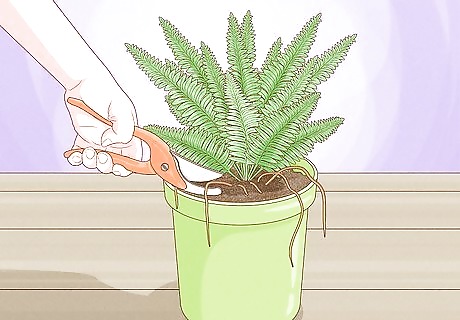
Chop the root runners that hang over the side of the pot. Some ferns will get "runners," sort of like a strawberry plant, except these are part of the plant's root system. These will be brown and woody. Chop them near the soil in the pot with shears or scissors to increase the health of your plant. These runners are draining energy from your plant. By cutting them, you're letting your plant focus on other vital areas.
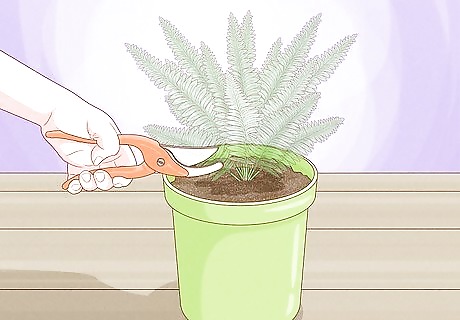
Cut back to the base if desired. If you are not liking the look of your plant at all, you can cut it down to just above the crown, much as you do with an outdoor fern. Use sharp, clean scissors to cut off the fronds. The fern will grow back from the crown, if you let it remain.




















Comments
0 comment